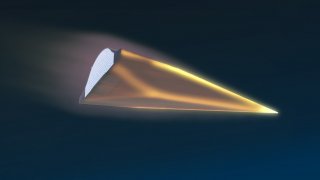by David Axe
The chairman of the U.S. Joint Chiefs of Staff seems a little confused about hypersonic weapons and what the United States can do to defend against them.
U.S. Army general Mark Milley’s confusion was apparent in his March 4, 2020 testimony before the U.S. Senate Armed Services Committee.
Milley overhyped the capabilities of China and Russia’s Mach-five missiles, potentially stirring uncertainty into ongoing negotiations over the Pentagon’s budget for 2021.
"There is no defense against hypersonic,” Milley said. “You're not going to defend against it. Those things are going so fast you're not going to get it.”
It’s true that hypersonic weapons such as China’s DF-17 and Russia’s Avangard essentially are impossible to intercept during the middle of their flight, the so-called “midcourse” phase.
The U.S. Navy deploys SM-3 interceptors that can destroy, during their midcourse flight, slower medium-range ballistic missiles, such as the type to which Iran might fit a nuclear warhead.
But the SM-3 probably wouldn’t work against hypersonic weapons, Kingston Reif, a missile expert at the Arms Control Association in Washington, D.C., told The National Interest.
The song "We Are the World" receives its international release.
Alexander Graham Bell is granted a patent for an invention he calls the "telephone".
“Our current midcourse missile defenses aren't capable of defending or postured to defend against hypersonic glide vehicles,” Reif said, “largely because gliders fly at a lower altitude and in a different atmosphere than traditional ballistic missiles.”
“The less predictable trajectory and potential maneuverability of gliders would also pose challenges to these defenses,” Reif added. “Existing terrestrial and space-based radars and sensors would also be challenged to track lower-altitude, maneuverable gliders.”
In that way, hypersonic missiles are similar to heavy, long-range Intercontinental Ballistic Missiles. ICBMs fly too high and too fast for reliable midcourse interception, although the Pentagon has claimed some success in limited tests of just such an intercept.
But it just might be possible to intercept a hypersonic weapon during its final, “terminal” moments of flight. That’s because a hypersonic missile is slower during its terminal phase than an ICBM is.
“Terminal, narrower-area defenses designed to intercept re-entry vehicles as they are bearing down on their target would in theory be more feasible, since at that stage a glider would be traveling slower than a ballistic [re-entry vehicle],” Reif explained.
Indeed, the Pentagon despite Milley’s alarmism is making big investments in terminal defenses against hypersonic missiles.
Congress in 2020 gave the Missile Defense Agency $400 million for the work. For 2021 the MDA wants another $200 million for the effort. The agency in February 2020 asked industry to begin submitting designs.
The investment in new defenses is why Milley’s fatalism is so “puzzling,” to borrow Reif’s characterization. The military acquisitions community knows it’s not impossible to develop defenses against hypersonic threats.
Milley’s comments could point to a wider misunderstanding of Mach-five missiles. “Hypersonics have been hyped up to be unprecedented, game-changing weapons,” Reif said.
But some skepticism probably is in order, David Larter advised in a November 2019 column in Defense News. “The catch is that none of this stuff works yet,” Larter wrote about new hypersonic weapons. “I want to emphasize that all of what we’re talking about here are prototypes.”
Bryan Clark, an analyst at the Center for Strategic and Budgetary Assessments in Washington, D.C., likewise is skeptical of what Larter described as “the hypersonics craze.”
“These boost-glide prompt-strike weapons are really designed to have a strategic effect,” Clark explained.
“There are a small number of weapons, they are really expensive, so you are not going to hit a bunch of targets with them. So even one weapon that’s a hypersonic weapon could still get shot down. You may not be able to generate a bunch of effects with them because they cost so much that you aren’t going to do the thing where you overwhelm the air-defenses and come in from multiple angles with hypersonics because you don’t have enough of them.”
Hypersonic weapons steadily are getting better and more numerous and, in the future, could pose a serious threat to U.S. forces. But it’s not impossible to defend against them.
David Axe serves as Defense Editor of the National Interest. He is the author of the graphic novels War Fix, War Is Boring and Machete Squad.

No comments:
Post a Comment